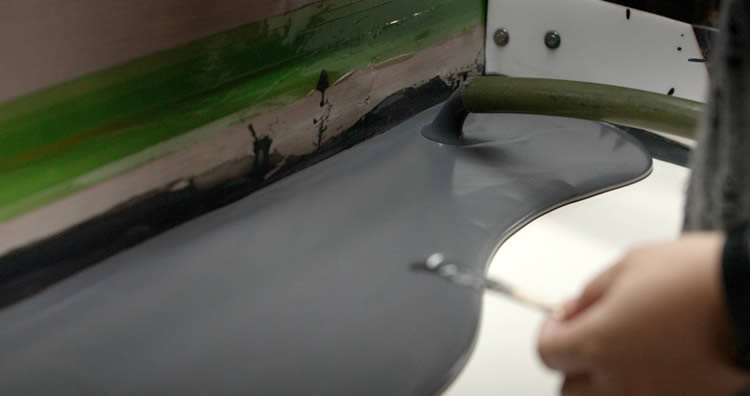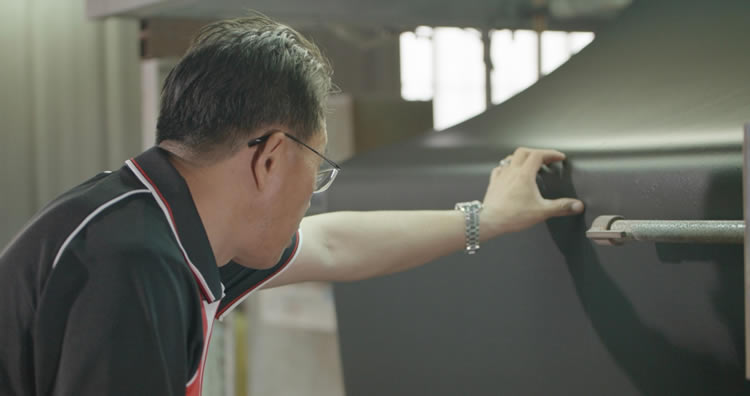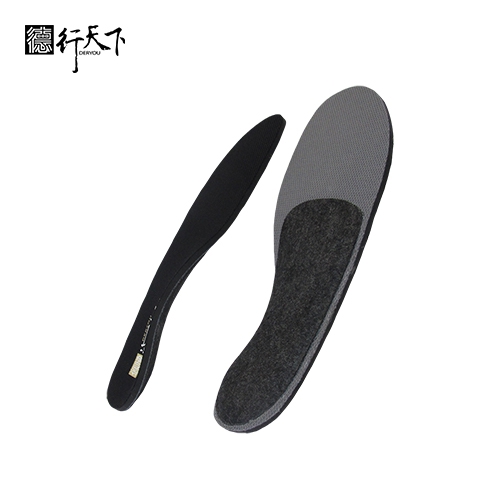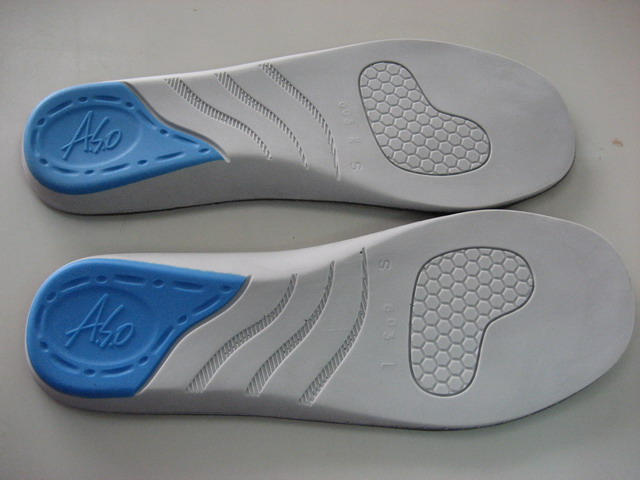Introduction – Company Background
GuangXin Industrial Co., Ltd. is a specialized manufacturer dedicated to the development and production of high-quality insoles.
With a strong foundation in material science and footwear ergonomics, we serve as a trusted partner for global brands seeking reliable insole solutions that combine comfort, functionality, and design.
With years of experience in insole production and OEM/ODM services, GuangXin has successfully supported a wide range of clients across various industries—including sportswear, health & wellness, orthopedic care, and daily footwear.
From initial prototyping to mass production, we provide comprehensive support tailored to each client’s market and application needs.
At GuangXin, we are committed to quality, innovation, and sustainable development. Every insole we produce reflects our dedication to precision craftsmanship, forward-thinking design, and ESG-driven practices.
By integrating eco-friendly materials, clean production processes, and responsible sourcing, we help our partners meet both market demand and environmental goals.


Core Strengths in Insole Manufacturing
At GuangXin Industrial, our core strength lies in our deep expertise and versatility in insole and pillow manufacturing. We specialize in working with a wide range of materials, including PU (polyurethane), natural latex, and advanced graphene composites, to develop insoles and pillows that meet diverse performance, comfort, and health-support needs.
Whether it's cushioning, support, breathability, or antibacterial function, we tailor material selection to the exact requirements of each project-whether for foot wellness or ergonomic sleep products.
We provide end-to-end manufacturing capabilities under one roof—covering every stage from material sourcing and foaming, to precision molding, lamination, cutting, sewing, and strict quality control. This full-process control not only ensures product consistency and durability, but also allows for faster lead times and better customization flexibility.
With our flexible production capacity, we accommodate both small batch custom orders and high-volume mass production with equal efficiency. Whether you're a startup launching your first insole or pillow line, or a global brand scaling up to meet market demand, GuangXin is equipped to deliver reliable OEM/ODM solutions that grow with your business.



Customization & OEM/ODM Flexibility
GuangXin offers exceptional flexibility in customization and OEM/ODM services, empowering our partners to create insole products that truly align with their brand identity and target market. We develop insoles tailored to specific foot shapes, end-user needs, and regional market preferences, ensuring optimal fit and functionality.
Our team supports comprehensive branding solutions, including logo printing, custom packaging, and product integration support for marketing campaigns. Whether you're launching a new product line or upgrading an existing one, we help your vision come to life with attention to detail and consistent brand presentation.
With fast prototyping services and efficient lead times, GuangXin helps reduce your time-to-market and respond quickly to evolving trends or seasonal demands. From concept to final production, we offer agile support that keeps you ahead of the competition.
Quality Assurance & Certifications
Quality is at the heart of everything we do. GuangXin implements a rigorous quality control system at every stage of production—ensuring that each insole meets the highest standards of consistency, comfort, and durability.
We provide a variety of in-house and third-party testing options, including antibacterial performance, odor control, durability testing, and eco-safety verification, to meet the specific needs of our clients and markets.
Our products are fully compliant with international safety and environmental standards, such as REACH, RoHS, and other applicable export regulations. This ensures seamless entry into global markets while supporting your ESG and product safety commitments.
ESG-Oriented Sustainable Production
At GuangXin Industrial, we are committed to integrating ESG (Environmental, Social, and Governance) values into every step of our manufacturing process. We actively pursue eco-conscious practices by utilizing eco-friendly materials and adopting low-carbon production methods to reduce environmental impact.
To support circular economy goals, we offer recycled and upcycled material options, including innovative applications such as recycled glass and repurposed LCD panel glass. These materials are processed using advanced techniques to retain performance while reducing waste—contributing to a more sustainable supply chain.
We also work closely with our partners to support their ESG compliance and sustainability reporting needs, providing documentation, traceability, and material data upon request. Whether you're aiming to meet corporate sustainability targets or align with global green regulations, GuangXin is your trusted manufacturing ally in building a better, greener future.
Let’s Build Your Next Insole Success Together
Looking for a reliable insole manufacturing partner that understands customization, quality, and flexibility? GuangXin Industrial Co., Ltd. specializes in high-performance insole production, offering tailored solutions for brands across the globe. Whether you're launching a new insole collection or expanding your existing product line, we provide OEM/ODM services built around your unique design and performance goals.
From small-batch custom orders to full-scale mass production, our flexible insole manufacturing capabilities adapt to your business needs. With expertise in PU, latex, and graphene insole materials, we turn ideas into functional, comfortable, and market-ready insoles that deliver value.
Contact us today to discuss your next insole project. Let GuangXin help you create custom insoles that stand out, perform better, and reflect your brand’s commitment to comfort, quality, and sustainability.
🔗 Learn more or get in touch:
🌐 Website: https://www.deryou-tw.com/
📧 Email: shela.a9119@msa.hinet.net
📘 Facebook: facebook.com/deryou.tw
📷 Instagram: instagram.com/deryou.tw
Latex pillow OEM production in China
Are you looking for a trusted and experienced manufacturing partner that can bring your comfort-focused product ideas to life? GuangXin Industrial Co., Ltd. is your ideal OEM/ODM supplier, specializing in insole production, pillow manufacturing, and advanced graphene product design.
With decades of experience in insole OEM/ODM, we provide full-service manufacturing—from PU and latex to cutting-edge graphene-infused insoles—customized to meet your performance, support, and breathability requirements. Our production process is vertically integrated, covering everything from material sourcing and foaming to molding, cutting, and strict quality control.Graphene insole manufacturer in Taiwan
Beyond insoles, GuangXin also offers pillow OEM/ODM services with a focus on ergonomic comfort and functional innovation. Whether you need memory foam, latex, or smart material integration for neck and sleep support, we deliver tailor-made solutions that reflect your brand’s values.
We are especially proud to lead the way in ESG-driven insole development. Through the use of recycled materials—such as repurposed LCD glass—and low-carbon production processes, we help our partners meet sustainability goals without compromising product quality. Our ESG insole solutions are designed not only for comfort but also for compliance with global environmental standards.Vietnam OEM/ODM hybrid insole services
At GuangXin, we don’t just manufacture products—we create long-term value for your brand. Whether you're developing your first product line or scaling up globally, our flexible production capabilities and collaborative approach will help you go further, faster.Taiwan athletic insole OEM supplier
📩 Contact us today to learn how our insole OEM, pillow ODM, and graphene product design services can elevate your product offering—while aligning with the sustainability expectations of modern consumers.Graphene insole manufacturer in Thailand
Found in lakes and rivers worldwide, single-celled creatures like these Paramecium bursaria can both eat and photosynthesize. Microbes like this play a double role in climate change, releasing or absorbing carbon dioxide — the heat-trapping greenhouse gas that is the primary driver of warming — depending on whether they rely on an animal-like lifestyle or a plant-like lifestyle. Credit: Daniel J. Wieczynski, Duke University A new study reveals that rising global temperatures could convert widespread microbial communities worldwide from carbon sinks to carbon emitters, potentially triggering climate change tipping points. These findings were recently published in the British Ecological Society’s journal, Functional Ecology. New research finds that under a warming climate, ocean plankton and other single-celled organisms, known as mixotrophic microbes – can switch from being carbon sinks to carbon emitters. The research also finds that changes in the behavior of these organisms right before they switch can act as an early warning signal for climate change tipping points. However, increases in nutrient levels in the environment, such as nitrogen from agricultural runoff, can mute these warning signals. Carbon Sinks to Carbon Emitters Mixotrophic microbes are organisms that can switch between photosynthesizing like plants (absorbing carbon dioxide) and eating like animals (releasing carbon dioxide). They are globally abundant, commonly found in freshwater and marine environments, and estimated to make up the majority of marine plankton. By developing a computer simulation that modeled how mixotrophic microbes acquire energy in response to warming, researchers at Duke University and the University of California Santa Barbara, have found that under warming conditions, mixotrophic microbes shift from being carbon sinks to carbon emitters. The findings mean that as temperatures increase, these highly abundant microbial communities could change from having a net cooling effect on the planet to a net warming effect. Dr Daniel Wieczynski of Duke University and lead author of the study said: “Our findings reveal mixotrophic microbes are much more important players in ecosystem responses to climate change than previously thought. By converting microbial communities to net carbon dioxide sources in response to warming, mixotrophs could further accelerate warming by creating a positive feedback loop between the biosphere and the atmosphere.” The mixotrophic protist Paramecium bursaria can eat bacteria or use photosynthesis to get energy and carbon. Photosynthesis occurs inside the endosymbiotic Chlorella algae (green spheres) that live inside P bursaria cells. Credit: Daniel Wieczynski Dr Holly Moeller of University of California Santa Barbara and co-author of the study added: “Because mixotrophs can both capture and emit carbon dioxide, they are like ‘switches’ that could either help reduce climate change or make it worse. These bugs are tiny, but their impacts can really scale up. We need models like this to understand how.” Dr. Jean-Philippe Gibert of Duke University and another co-author of the study said: “State-of-the-art predictive models of long-term climate change currently only account for microbial action in an extremely reductive, partial, or sometimes plain wrong fashion. Research like this is therefore much needed to improve our broader understanding of the biotic controls on Earth’s atmospheric processes.” An Early Warning System The researchers’ model also revealed that right before mixotrophic microbe communities switch to emitting carbon dioxide, their abundance starts to fluctuate wildly. These changes could be detected in nature by monitoring mixotrophic microbe abundance and offer hope that these microbes could act as early warning signals for climate change tipping points. Dr. Wieczynski said: “These microbes may act as early indicators of the catastrophic effects of rapid climate change, which is especially important in ecosystems that are currently major carbon sinks like peatlands, where mixotrophs are highly abundant.” However, the researchers also found these early warning signals can be muted by increases of nutrients like Nitrogen to the environment, typically caused by runoff from agriculture and wastewater treatment facilities. When higher amounts of such nutrients were included in the simulations, the researchers found that the range of temperatures over which the tell-tale fluctuations occur starts to shrink until eventually the signal disappears and the tipping point arrives with no apparent warning. “Detecting these warning signs is going to be challenging. Especially if they’re getting more subtle with nutrient pollution.” Said Dr. Moeller. “However, the implications of missing them are huge. We could wind up with ecosystems in a much less desirable state, adding greenhouse gases to the atmosphere instead of removing them.” In the study, the researchers ran simulations using a 4-degree span of temperatures, from 19 to 23 degrees Celsius. Global temperatures are likely to surge 1.5 degrees Celsius above pre-industrial levels within the next five years, and are on pace to breach 2 to 4 degrees before the end of this century. The researchers caution that the mathematical modeling used in the study draws on limited empirical evidence to investigate the effects of warming on microbial communities. Dr Wieczynski said: “Although models are powerful tools theoretical results must ultimately be tested empirically. We strongly advocate for further experimental and observational testing of our results.” Reference: “Mixotrophic microbes create carbon tipping points under warming” by Daniel J. Wieczynski, Holly V. Moeller and Jean P. Gibert, 31 May 2023, Functional Ecology. DOI: 10.1111/1365-2435.14350 The study was funded by the Simons Foundation, the National Science Foundation, and the U.S. Department of Energy.
Bamboo longhorn beetle (Chlorophorus annularis) captured in Braintree, United Kingdom. Credit: Stephen Rolls The Asian bamboo longhorn beetle is more widespread in Europe than previously known. A worryingly high number of Asian bamboo longhorn beetles (Chlorophorus annularis) turn out to have been emerging across Europe for about a century already, finds an international research team, headed by researchers from the Center of Natural History, University of Hamburg, Germany. Curiously, the recent records of the invasive, non-native to the Old Continent species are mostly sourced from citizen scientists and online platforms, which proves the power of involving the public in species monitoring. The study is published in the open-access, peer-reviewed scientific journal BioRisk. In our globalized world, which has already become victim to climate change and biodiversity loss, non-native species present a further threat to our ecosystems. Thus, the rising accounts of newly recorded alien species are of serious concern to both scientists and (inter)national institutions. However, surveying non-native species remains limited to a small fraction of species: those known to be particularly invasive and harmful. Emerging Asian bamboo longhorn beetle from bamboo in the Czech Republic. Credit: Petr Jansa Global Trade Fuels the Beetle’s Silent Spread One of the multitude of non-native species that are currently lacking efficient and coordinated surveying efforts is the Asian bamboo longhorn beetle (Chlorophorus annularis). Naturally occurring in temperate and tropical Southeast Asia, the insect feeds on a variety of plants, but prefers bamboo. Thus, due to the international trade of bamboo and the insects ‘traveling’ with the wood, the species has continuously been expanding its distribution around the world. Its first appearance in Europe was recorded back in 1924, when it was identified in England. Bamboo longhorn beetle (Chlorophorus annulari) captured in Lincoln, United Kingdom. Credit: Sheena Cotter Back to our days, during a fieldwork practice for students at the University of Hamburg, held within the city because of the COVID-19 traveling restrictions, the team stumbled across a longhorn beetle, later identified by scientists as the Asian bamboo borer. Furthermore, it became clear that there were even more recent records published across different citizen science platforms, such as iNaturalist, iRecord and Waarneming.nl. Having taken the contacts of the citizen scientists from there, the researchers approached them to ask for additional collection details and images, which were readily provided. As a result, the researchers formally confirmed the presence of the Asian bamboo borer in Belgium and the Netherlands. In total, they reported thirteen new introductions of the species in Europe, which translates to a 42% increase in the records of the species for the continent. Climate Change and Garden Trends May Aid Establishment “In light of the warming climate and a growing abundance of ornamental bamboo plants in Europe, the beetle might get permanently established. Not only could it become a garden pest, but it could also incur significant costs to the bamboo-processing industry,” comments Dr. Matthias Seidel, lead author of the study. Having realized the potential of citizen science for bridging the gaps in invasive species monitoring, the researchers now propose for specialized platforms to be established with the aim to familiarise non-professional scientists with non-native species of interest and provide them with more sophisticated reporting tools. The aim is to speed up the identification of important alien species by collating records of specific species of interest, which are flagged and regularly exported from other citizen science databases and platforms. Reference: “Citizen scientists significantly improve our knowledge on the non-native longhorn beetle Chlorophorus annularis (Fabricius, 1787) (Coleoptera, Cerambycidae) in Europe” by Matthias Seidel, Maren Lüttke, Christian Cocquempot, Katy Potts, Wil J. Heeney and Martin Husemann, 9 March 2021, BioRisk. DOI: 10.3897/biorisk.16.61099
A piece of the tumor was made completely transparent and scanned in 3D with a special microscope. The components labeled with fluorescent colors were rendered in a rotatable 3D representation on the computer (red: blood vessels, turquoise: tumor cells, yellow: therapeutic antibody). Credit: Plückthun Lab A new technology developed by University of Zurich researchers enables the body to produce therapeutic agents on demand at the exact location where they are needed. The innovation could reduce the side effects of cancer therapy and may hold the solution to better delivery of Covid-related therapies directly to the lungs. Scientists at the University of Zurich have modified a common respiratory virus, called adenovirus, to act like a Trojan horse to deliver genes for cancer therapeutics directly into tumor cells. Unlike chemotherapy or radiotherapy, this approach does no harm to normal healthy cells. Once inside tumor cells, the delivered genes serve as a blueprint for therapeutic antibodies, cytokines and other signaling substances, which are produced by the cancer cells themselves and act to eliminate tumors from the inside out. Sneaking adenoviruses past the immune system undetected “We trick the tumor into eliminating itself through the production of anti-cancer agents by its own cells,” says postdoctoral fellow Sheena Smith, who led the development of the delivery approach. Research group leader Andreas Plueckthun explains: “The therapeutic agents, such as therapeutic antibodies or signaling substances, mostly stay at the place in the body where they’re needed instead of spreading throughout the bloodstream where they can damage healthy organs and tissues.” The UZH researchers call their technology SHREAD: for SHielded, REtargetted ADenovirus. It builds on key technologies previously engineered by the Plueckthun team, including to direct adenoviruses to specified parts of the body to hide them from the immune system. High amount of drugs in the tumor, low concentration in other tissues With the SHREAD system, the scientists made the tumor itself produce a clinically approved breast cancer antibody, called trastuzumab, in the mammary of a mouse. They found that, after a few days, SHREAD produced more of the antibody in the tumor than when the drug was injected directly. Moreover, the concentration in the bloodstream and in other tissues where side effects could occur were significantly lower with SHREAD. The scientists used a very sophisticated, high-resolution 3D imaging method and tissues rendered totally transparent to show how the therapeutic antibody, produced in the body, creates pores in blood vessels of the tumor and destroys tumor cells, and thus treats it from the inside. Use to combat COVID-19 being investigated Plueckthun, Smith and colleagues emphasize that SHREAD is applicable not only for the fight against breast cancer. As healthy tissues no longer come into contact with significant levels of the therapeutic agent, it is also applicable for delivery of a wide range of so-called biologics – powerful protein-based drugs that would otherwise be too toxic. In fact, members of the Plueckthun group are currently applying their technology in a project aimed as a therapy for COVID-19. Adenoviral vectors are already being used in several of the COVID vaccines, including the Johnson & Johnson, AstraZeneca, China’s CanSino Biologics and Russia’s Sputnik V vaccines – but without the innovative SHREAD technology. “By delivering the SHREAD treatment to patients via an inhaled aerosol, our approach could allow targeted production of Covid antibody therapies in lung cells, where they are needed most,” Smith explains. “This would reduce costs, increase accessibility of Covid therapies and also improve vaccine delivery with the inhalation approach.” Reference: “The SHREAD gene therapy platform for paracrine delivery improves tumor localization and intratumoral effects of a clinical antibody” by Sheena N. Smith, Rajib Schubert, Branko Simic, Dominik Brücher, Markus Schmid, Niels Kirk, Patrick C. Freitag, Viviana Gradinaru and Andreas Plückthun, 17 May 2021, Proceedings of the National Academy of Sciences. DOI: 10.1073/pnas.2017925118 Funding: Swiss National Science Foundation, NIH/National Cancer Institute
DVDV1551RTWW78V
Thailand flexible graphene product manufacturing 》your reliable OEM/ODM partner for long-term collaborationESG-compliant OEM manufacturer in Indonesia 》seamless coordination from idea to finished productVietnam high-end foam product OEM/ODM 》trusted by clients across wellness, footwear, and bedding industries
下一則: Taiwan foot care insole ODM development factory 》f
限會員,要發表迴響,請先登入


